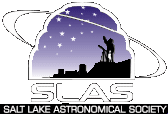|
Questions About Telescopes & Equipment
Q: Do I need a telescope to do astronomy
observing?
A: No. Thousands of stars are visible to the
naked eye. A small pair of binoculars will allow you to see many of the
brightest nebulas, galaxies and star clusters. Fainter objects require a
telescope. Constellations are too large to view with a telescope or binoculars
and can best be viewed with the unaided eye.
Q: What kind of telescope should I buy?
A: That depends mostly on what type of
objects you intend to observe as well as your budget. Refracting telescopes are
good for observing the planets and moon, but are not as well suited as
reflecting telescopes for viewing galaxies and nebulas. Reflecting telescopes
can be significantly less expensive than refractors. Portability and accessories
used must be considered as well.
Attending some star parties to get some comparisons before you purchase a
telescope can help you make your decisions.
Q: How much power is good for a telescope?
A: A trick question! Any telescope may have
ANY power, depending upon the eyepiece used. A general rule of thumb is that one
can use about 60 power for each inch of the diameter of the telescope mirror or
lens (refractors can use higher power per inch than reflectors, due to their
higher image quality). On a given night, the power that can actually be used is
mainly dependent upon the stability of the atmosphere (seeing). The power of a
telescope may be computed with:
P = focal length of telescope/focal length of eyepiece
Questions About The Night Sky
Q: Where is the North Star?
A:
Look for a modest star due north, about
40 degrees up off the horizon. It is the end of the handle in the Little Dipper
(part of the constellation Ursa Minor).
Q: What is the brightest star visible?
A: The brightest star visible from earth
(besides the sun) is Sirius, in the winter constellation Canis Major (Big dog).
Q: Why
can't I see very many stars from Salt
Lake City?
A: Because of Light pollution. Light
pollution is the effect caused by outdoor lighting that puts light up into the
sky where it scatters, making the sky brighter than stars and other astronomical
objects. Getting away from city lights will allow you to see a much more
pleasing view of the sky.
Strange & Unusual
Q: Do amateur astronomers see UFOs?
A: Most of the time, a telescope is looking
at a very small part of the sky. Amateur astronomers see many strange or unusual
sights that to the average person would be called UFOs, but are actually
satellites and explainable phenomena.
Q: Why do stars twinkle? Do planets twinkle?
A: Stars are essentially a point of light ñ
even with the largest telescopes. Turbulence in the atmosphere causes the point
of light to jump around, causing the effect we call twinkling. Planets are not
points of light and though their images distort, they rarely twinkle unless the
atmosphere is very bad.
Q: Why do stars on the horizon seem to blink
different colors?
A: The turbulence in the atmosphere near the
horizon causes stars to "twinkle" much more than if they are overhead. This may
cause them to appear different colors.
|

![]()